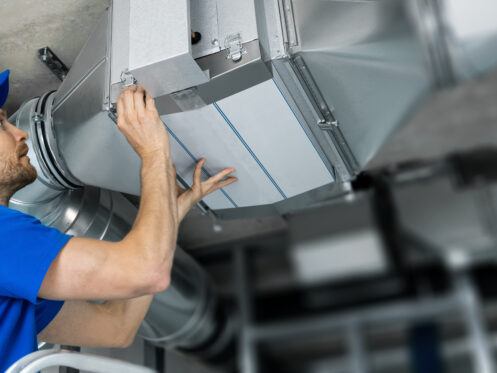If you reside in Arizona, you are aware of the need to have a dependable and effective home conditioning system. However, did you realize that your home’s ductwork is essential to providing cool air to every room? Poorly planned, built, or maintained ducting can waste energy, lower comfort levels, and reduce the quality of the air within your home. For this reason, if you are planning on installing ductwork in your newly constructed home or replacing your older ductwork, you should be aware of these seven ducting guidelines to guarantee the effectiveness and efficiency of your ducting.
1. Design and Planning
Proper planning and design of the ducting is the first step toward efficiency. Along with the airflow and pressure needs of your cooling system, your installer will take into account the size, arrangement, and placement of your ducts.
Your home’s ventilation and insulation must also be considered. A qualified ducting contractor can assist you with this phase, as they possess the knowledge and equipment needed to make precise calculations and measurements related to your HVAC system’s airflow requirements.
2. Selection of Materials
Selecting the appropriate material for your ducts is the next step. Ducts come in a variety of materials, including flexible plastic, fiberglass, and metal. Various types have different benefits and drawbacks based on factors like price, longevity, and effectiveness. Additionally, your installer will confirm that the materials used comply with local regulations and standards and are compatible with your cooling system.
3. Fabrication of Ducts
Fabricating your ducts is the next step after material selection. This entails shaping, cutting, and assembling the ducts to match your blueprint and requirements. The ducts must be smooth and leak-free because any flaws can lower the efficiency of your cooling system.
Sharp curves, twists, and turns should also be avoided since they might cause resistance and turbulence. A professional may fabricate your ducts on-site or order them pre-fabricated from a reputable manufacturer.
4. Installing Ducts
Installing your ductwork in your house is the next stage. When installing ducts, you should ensure your installer adheres to recommended practices and recommendations, which include insulating ducts in unconditioned spaces, sealing joints and connections with tape or mastic, and securing the ducts with the appropriate supports and fasteners. Additionally, your contractor should keep the ducts away from places that produce heat, moisture, or other contaminants, such as bathrooms, furnaces, and water heaters.
5. Insulation and Sealing
Your ducts need to be properly sealed and insulated after installation. Sealing your ducts may stop air leaks that can lower comfort and waste energy. Professionals will use mastic, tape, or spray sealer to seal the connections in your ductwork. They will also wrap ducts with foam, fiberglass, or reflective insulation where appropriate.
6. Testing and Balancing
Testing and balancing your ducts comes next. Testing your ducts entails taking measurements of the pressure and airflow within them as well as looking for leaks and other flaws. To test your ducts, a professional will employ a pressure pan test, duct blaster test, or blower door test.
To achieve even and ideal air distribution throughout your house, balancing your ducts entails modifying the airflow and pressure in addition to altering the dampers and registers. Before leaving, your installer will make any final adjustments necessary to address any of the issues they discovered during the inspection and balance your ductwork.
7. Regular Maintenance
Regular maintenance of the ducting is the last step toward efficiency. The Environmental Protection Agency suggests that the average homeowner may lose over 20% of their conditioned air through faults in their ductwork. You should get your ducts inspected and repaired at least once a year or more frequently if you see any symptoms of an issue. Symptoms may include increased dust, mold, smells, noises, or uneven cooling.
To maintain the cleanliness and effectiveness of your cooling system and ducts, you should also change your air filters regularly. Experts recommend they be replaced at least every three months. However, factors like having pets or your air conditioner running more often during extreme weather may require you to change yours more often.
Contact Us Today
If you need any help with your ductwork in Tolleson, AZ, you can trust El Indio AC to provide you with the best service and solutions. We can handle any ductwork project, from planning and design to installation and maintenance. We can also help with home automation, heat pumps, AC installation, repair and maintenance, and more. Contact us today to get an estimate for your ductwork project.


